Living rooms vary the most from home to home, but most living rooms in apartments are actually quite similar. For people who truly settle down in an apartment or get a home that is fully furnished it is normal to see a sofa/couch (소파, sopa), a standing air conditioner (에어컨, eeokeon), and opposite of the sofa is a TV on a wide stand. Usually the wall behind the TV has a door bell video unit so the resident can see who is at the door. Studio apartments or officetels typically have a combined living room/bedroom with a computer set up instead of a TV.
If your residence has an air conditioner in the living room it will be a standing version. If there is an additional air conditioner in another room, it will be smaller and mounted on a wall. Next to or behind the unit will be an insulated metal pipe that goes outside. The wrapped pipe will filled with a gas that moves the cold into your home. If you try to install an air conditioner in the summer you may be waiting a week as installers are incredibly busy in that season. If you try to get one installed in winter, you’ll get a steal of a price if you buy one used. However, when installing the unit in winter, installers usually won’t fill it with gas as the temperature affects the quantity of gas that can be inserted. If this is the case, they will give you a business card and you are to contact them in spring and they’ll fill the pipe with gas. Again, don’t want until it gets hot outside as you’ll be waiting awhile.
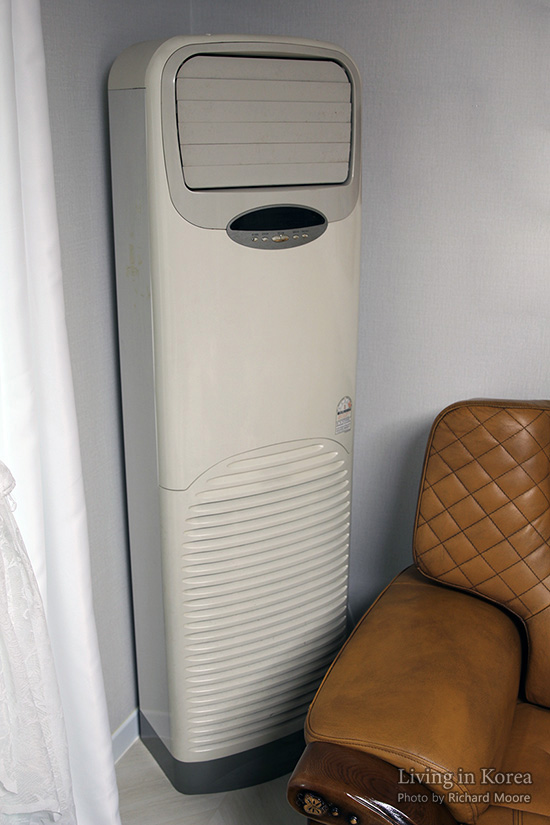
Confirm the people that installed the insulated pipe filled in the empty space in the wall with silicon (실리콘, sillikon), otherwise you’ll be wasting electricity as outside air will continuously be flowing inside.

If there is a space in the hole in your wall, contact your landlord to get them to fill it in with silicon. If you want to do it yourself you can buy some at a hardware store or some hypermarkets. The silicon itself comes in a long tube with a detachable funnel ending, comes in clear (투명, 透明, tumyeong) or white (백색, 白色, baeksaek), and you’ll need a “silicon gun” (실리콘건) to squeeze it out.
Connected to the outside of your window or to your veranda will be the rest of the air conditioner. sitting on a bracket. If your residence does not have a bracket and you are buying an air conditioner, expect to pay more to purchase the bracket. Here are views from both outside and inside. The first image is for a living room air conditioner and is therefore bigger. The second image is for a bedroom air conditioner and is smaller.
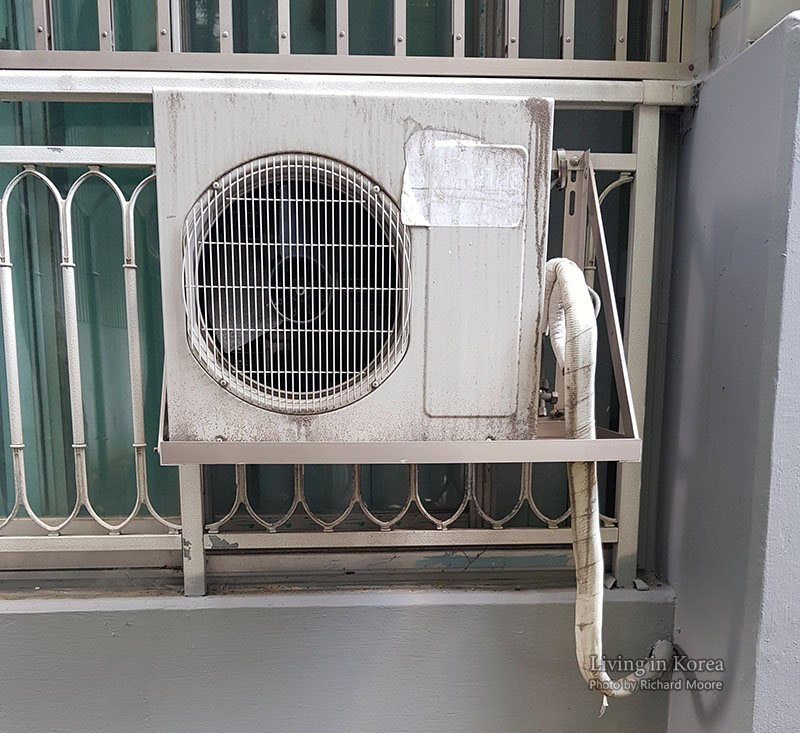
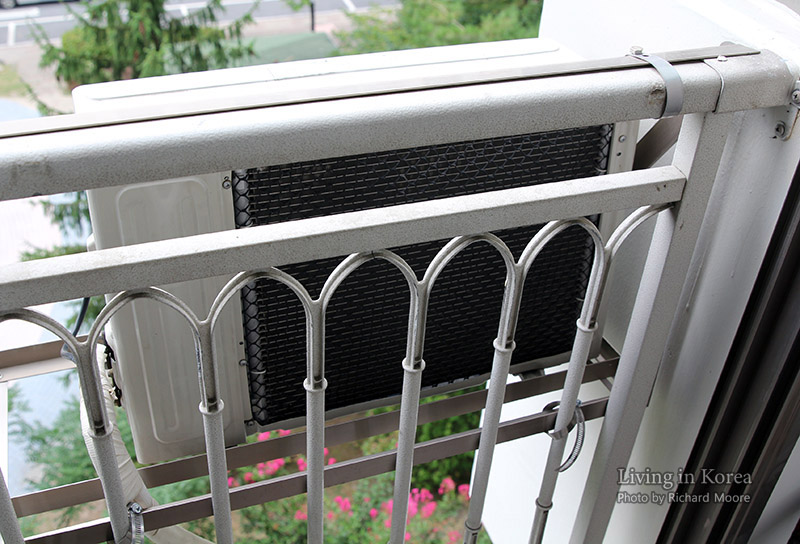
Standing air conditioners have buttons on the front and can largely be operated independently of remotes. Usually bedroom sized units don’t have any buttons and need their matching remote control in order to function or do more than turn on and off. Replacement remotes can be purchased but can be a hassle. Despite different makes and models having different designs and different remote controls, you will see common buttons. This includes the remotes for motels which sometimes combine buttons for the air conditioner, TV, and lights all into one very long remote control. If you want a closer look at the images below, click one to see a larger size.
운전/정지 - (運轉/停止, unjeon/jeongji) On and off
온도조절 - (溫度調節, ondojojeol) Temperature up or down. Degrees are in Celsius and the lowest is normally 18.
풍량선택 - (風量選擇, pungnyang seontaek) Strength of wind.
강…약 – (强...弱, gang...yak) Strength of wind from strong (강, gang) to light (약, yak)
풍향선택 - (風向選擇, punghyang seontaek) Direction of wind.
공기정화 - (空氣淨化, gonggi jeonghwa) Air purifier function.
운전선택 - (運轉選擇, unjeon seontaek) Select other options.
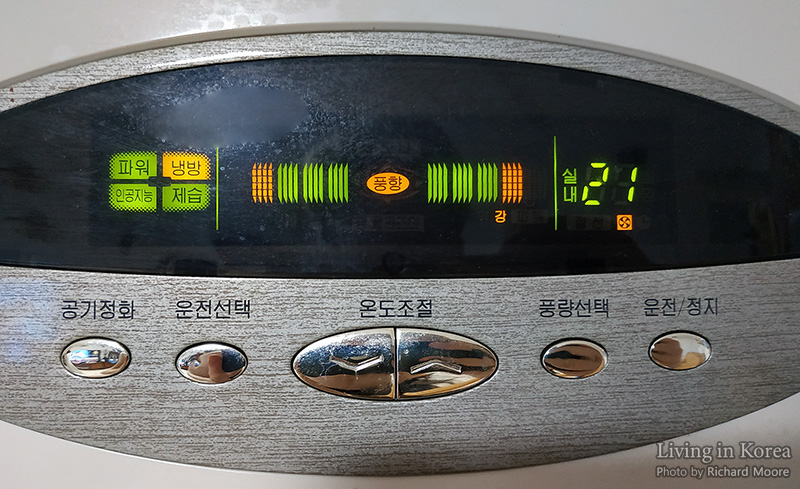
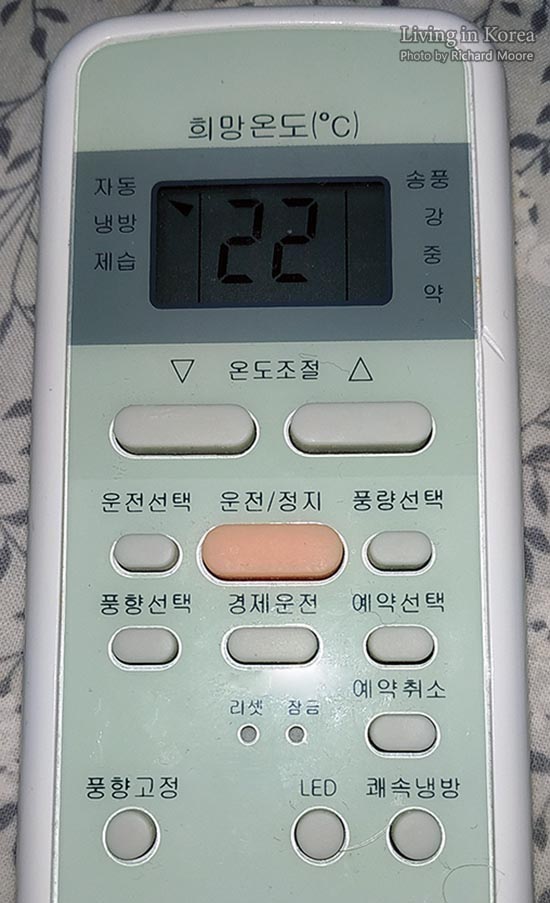
When you purchase electronics new, or sometimes used, you’ll see a sticker with a 1 to 5 indicating how much power it uses compared to standards at time of production. Sticker designs have changed some over the years, but a 1 is the best and is in a green color and 5 is the worst and comes in a red color. Energy usage stickers can be on anything from AC units, TVs, water purifiers, and even some dehumidifiers.
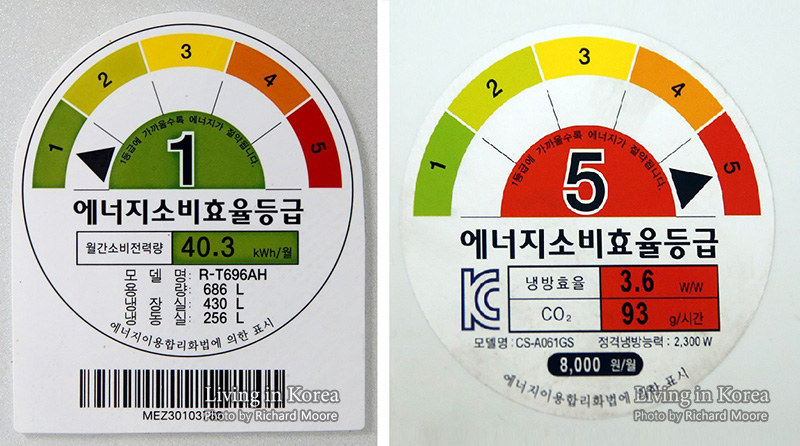
The style of these stickers has changed over the years and identifying the difference will help you know how old a used electronic item is which will directly affect the amount of energy used as standards have changed over time. Here is an example of an older sticker design stating very high energy usage.
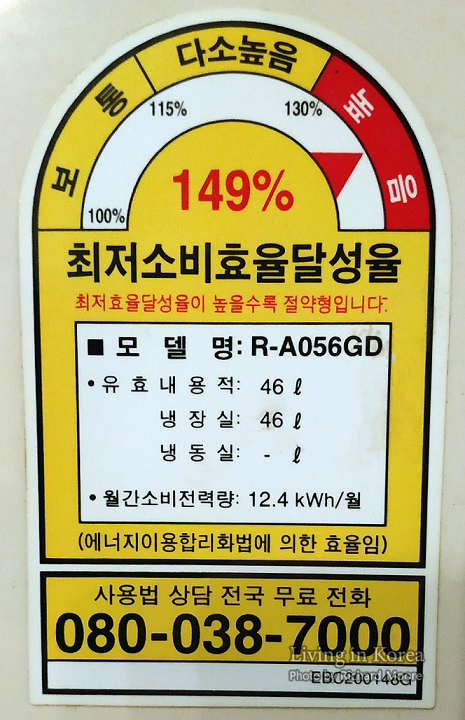
If you want to get some furniture and appliances for your home on the cheap, do a search for 중고가구 (中古 家具, junggogagu literally “used + furniture”) and see what is available in your area. If you are lucky, you can find a store selling a sofa, fridge, microwave, etc. If your home is in the area, the price might include them dropping off the items at your home which will require you being home or you give them the code for your front door and then change it afterward. If you are buying electronics, for example a fridge or washing machine, confirm what kind of warranty the items have. When you are going to leave Korea and start to get rid of your possessions, contact these secondhand stores as they pay cash and would pick up the items.
If you are bringing over electronics from your home country, confirm the plug face fits and the voltage both match Korea. The plug style is two circles. It is fairly common to find two prong plug adaptors (전기젠더 電氣젠더, jeongi jendeo – or – 콘센트 어댑터, konsenteu eodaepteo) between Korea and North America/Japan but harder for other countries.
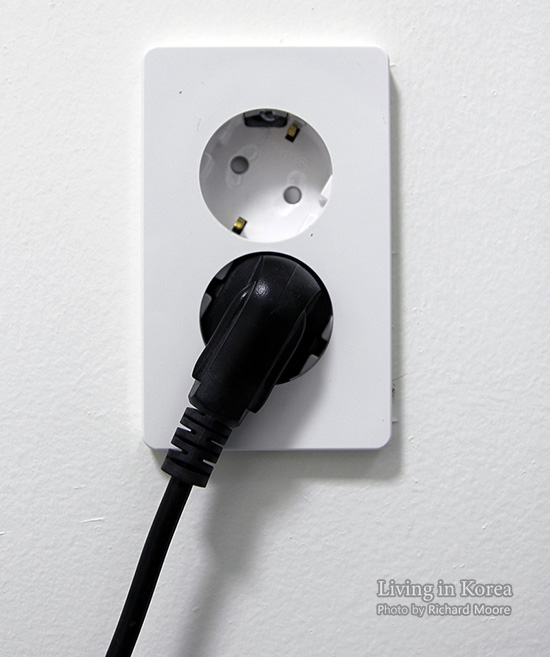
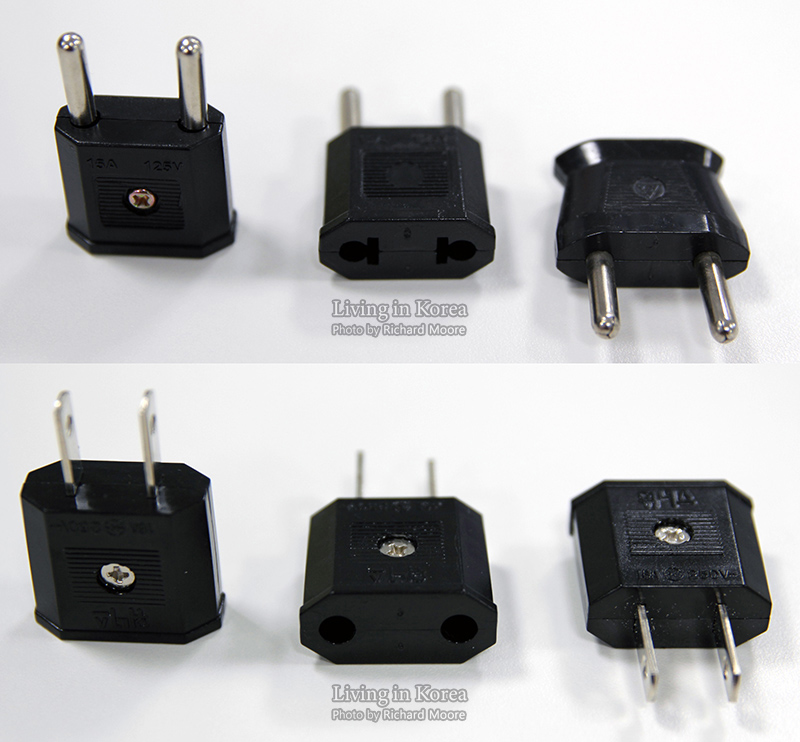
Plugs in Korea are standardized at 200 volts. If your electronics can only take 110 volts you will need to get a two or three prong power down converter, i.e. transformer (변압기, 變壓器, byeonapgi) and sometimes written as 가정용 변압기 (家庭用 變壓器, gajeongyong byeonapgi). These are quite heavy and harder to find outside of areas with a large international population. It is normal to find these are 220v -> 110v but not 220 -> 100v, so if you have electronics from Japan, you might want to confirm your device is okay taking the extra 10 volts.
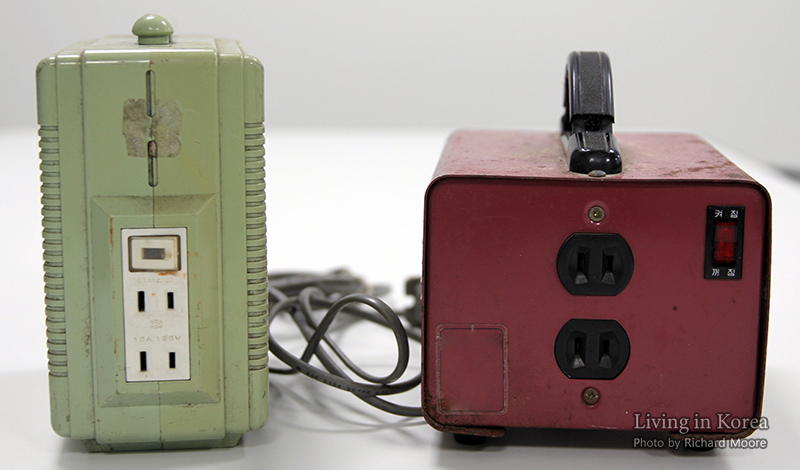
If you are visiting a home that has a small child, it is normal to see padding on the floor to dampen the sound of little feet running back and forth. Being a kind neighbor means being considerate of noise going through walls and floors to other units. Typically people stop their kids from running after 9 PM and make sure their washing machines finish around this time. If you have a loud neighbor, do not confront them directly, but instead complain to the building owner or manager to talk to them. Rules for this kind of situation do exist and might differ building to building. But going through the building management is the recommended course of action and keeps you away from any kind of confrontation. You are paying a monthly fee which covers the cleaning of common areas (hallways, stairs, elevators), grass to be cut if there is any, and for the manager to talk to noisy neighbors. As you are paying for this service, might as well use it and avoid the noisy neighbor knowing who got upset at them.
Having seen the living room, let's take a look at the kitchen and dining room.